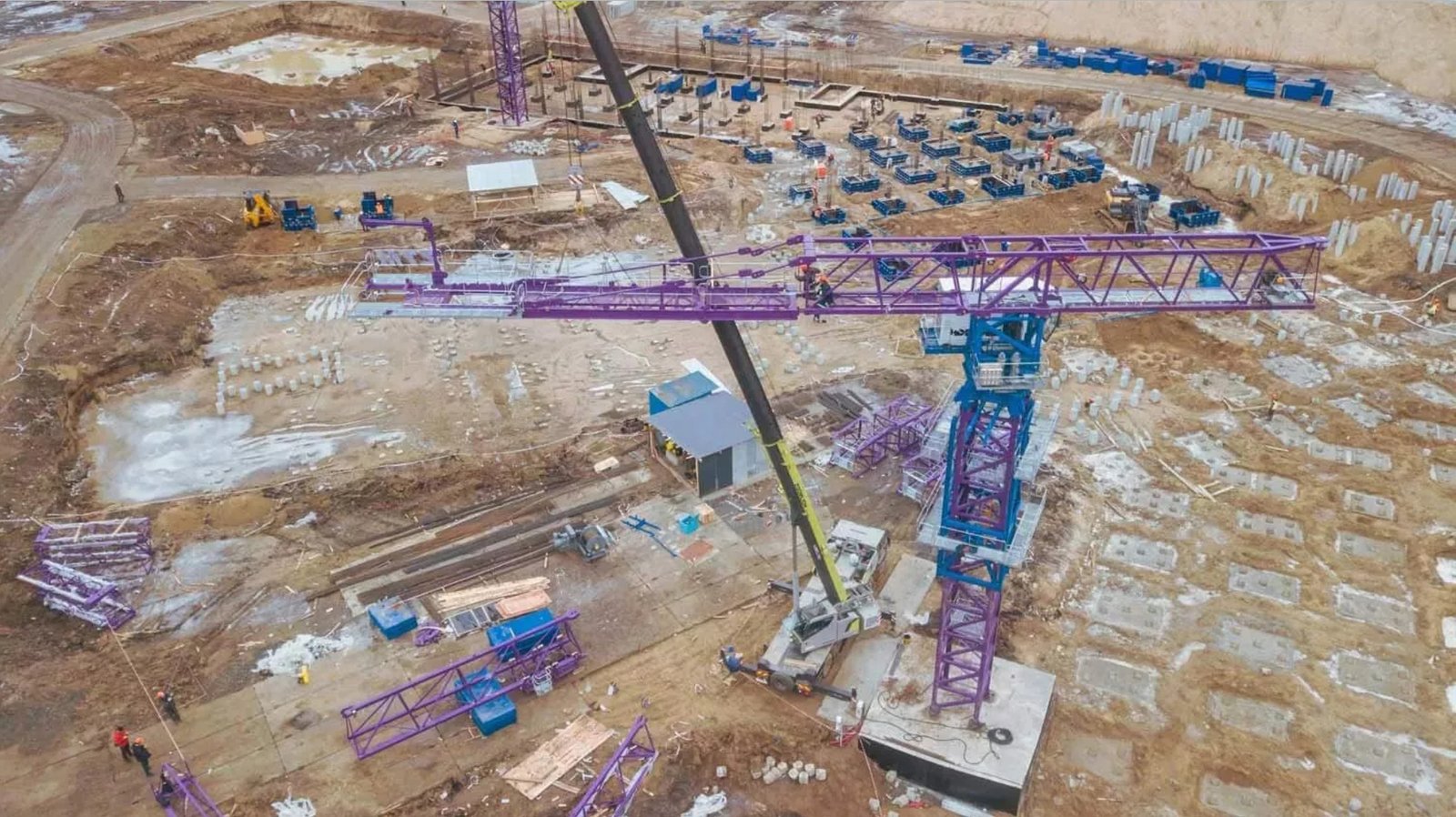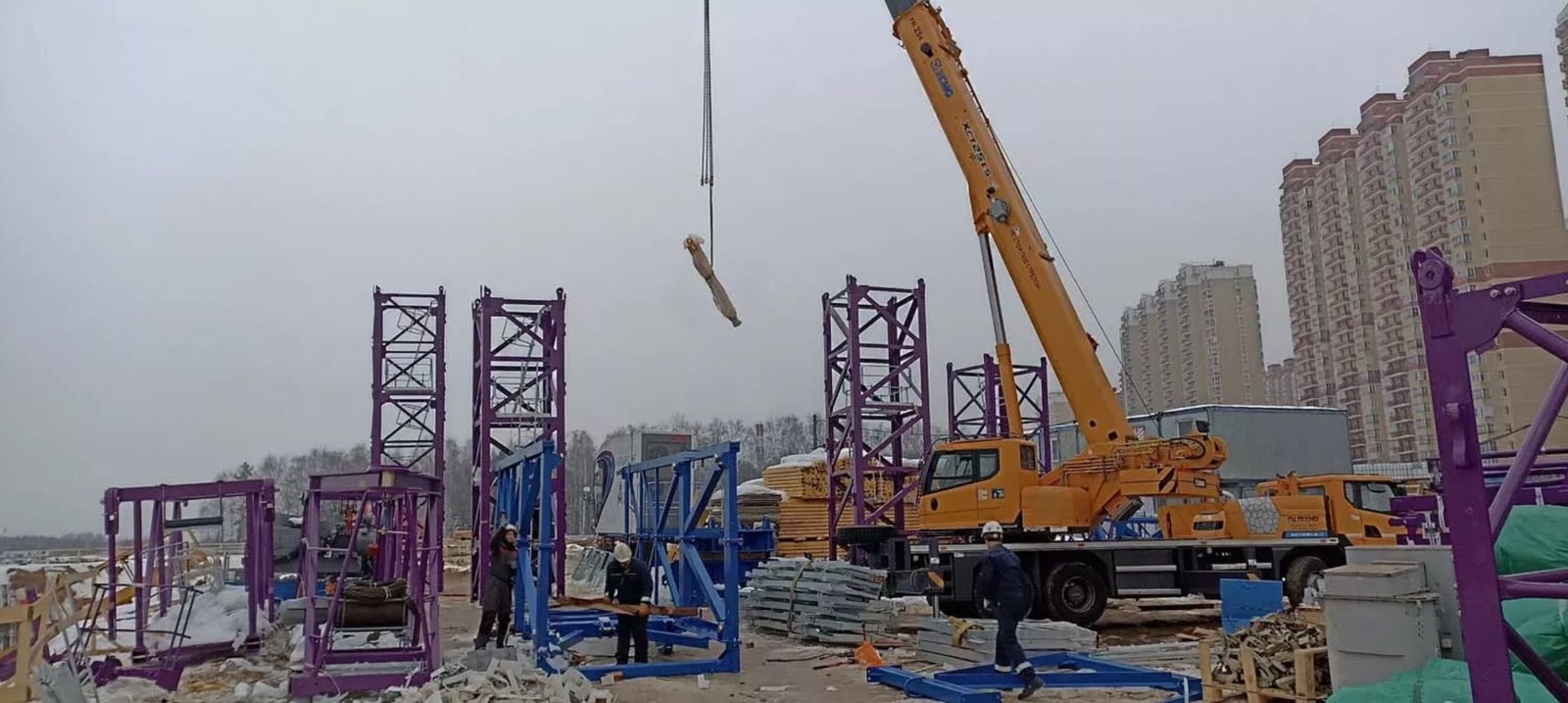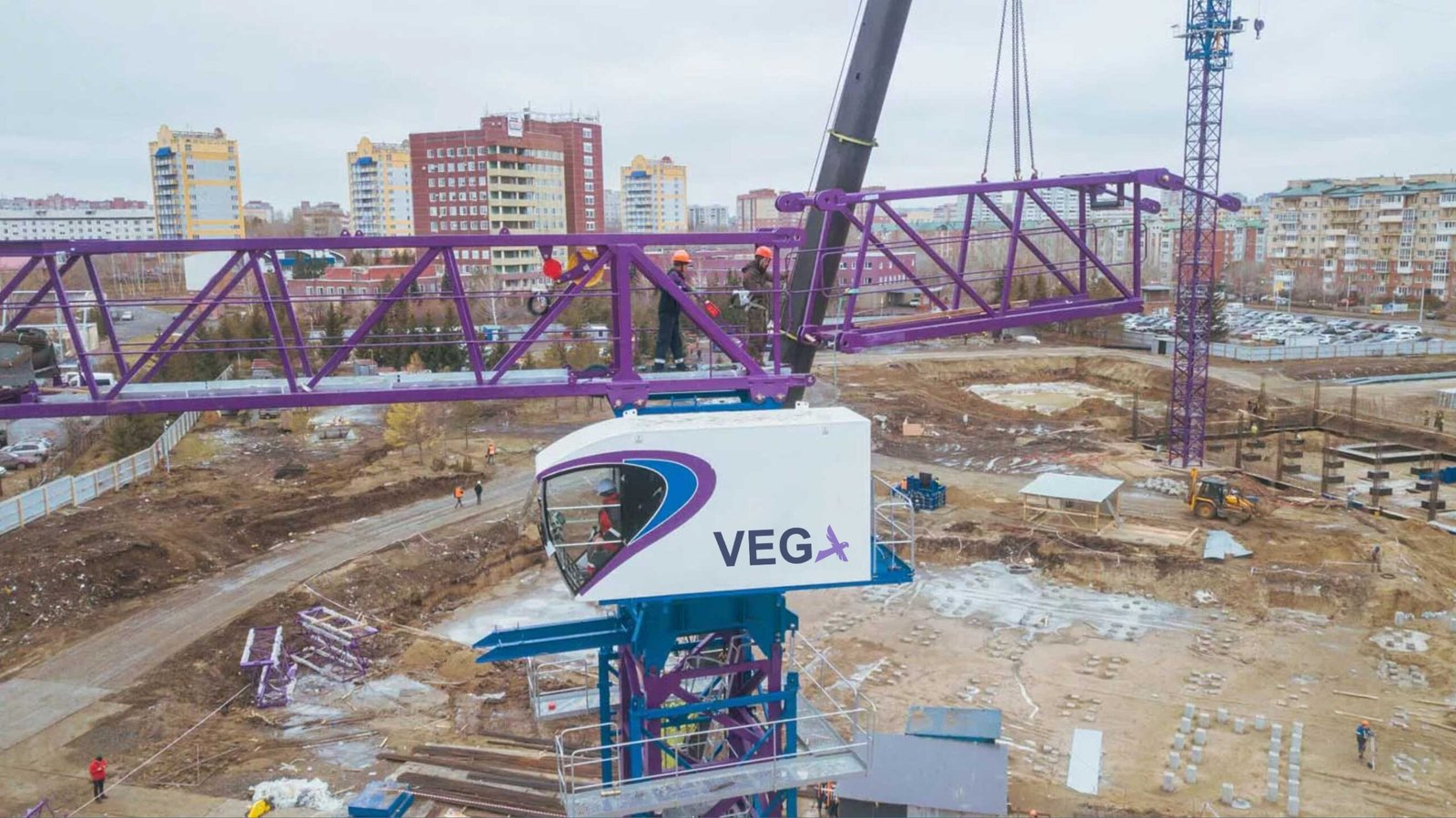
Assembling a tower crane is a complex and high-risk operation that requires careful planning, precision, and adherence to safety regulations1. In this guide, I’ll walk you through the six essential steps for safely and efficiently assembling a tower crane.
1. Site Preparation – The Foundation of a Safe Installation

Before assembly begins, the construction site must be properly prepared to ensure stability and safety. A poorly prepared site can lead to crane instability2, which increases the risk of accidents.
Key Site Preparation Tasks:
- Conduct a soil analysis3 to ensure the ground can support the crane.
- Clear obstacles that might interfere with assembly.
- Mark designated assembly zones for efficient workflow.
- Verify that all necessary permits and safety checks4 are completed.
| Site Factor | Why It’s Important | Potential Issues |
|---|---|---|
| Soil stability | Prevents crane sinking or tilting | Weak soil can cause collapse |
| Weather conditions | Ensures safe working environment | High winds can delay assembly |
| Clearance space | Allows smooth crane operation | Obstacles can cause accidents |
Proper site preparation ensures a smooth assembly process and minimizes the risks associated with unstable ground or unexpected environmental challenges.
2. Assembling the Base and Mast – Ensuring Stability

The base5 and mast6 are the backbone of the tower crane. A stable base prevents tipping, and a properly installed mast allows the crane to reach its required height.
Steps to Assemble the Base and Mast:
- Install the foundation – This can be a concrete pad or anchoring system, depending on the crane type.
- Position the base section – Align it accurately using leveling tools.
- Attach the initial mast sections – These are stacked and secured with bolts and pins.
| Mast Assembly Type | Best Used For | Stability Considerations |
|---|---|---|
| Fixed Mast | Long-term projects, skyscrapers | Requires deep foundation |
| Climbing Mast | High-rise buildings | Needs extension during build |
| Mobile Base | Temporary or short-term projects | Requires ballast for balance |
Once the base and mast are in place, proper alignment checks must be performed to prevent structural misalignment.
3. Installing the Slewing Unit – Enabling Rotation

The slewing unit7 allows the crane to rotate and is installed on top of the mast. It consists of a turntable8, motor, and gearbox, all of which enable smooth movement.
Steps to Install the Slewing Unit:
- Position the slewing unit on top of the mast.
- Secure it with bolts and locking pins to prevent movement.
- Connect the power system and test the rotation.
| Component | Function | Installation Challenges |
|---|---|---|
| Turntable | Enables 360° crane rotation | Needs precise alignment |
| Motor & gearbox | Controls rotation speed | Requires lubrication & testing |
| Safety locks | Prevents uncontrolled movement | Must be properly secured |
A well-installed slewing unit ensures that the crane can safely and efficiently rotate to handle loads from different angles.
4. Attaching the Jib and Counterweight – Achieving Balance

The jib (boom)9 is the horizontal arm that carries the load, while the counterweight10 stabilizes the crane. Proper balancing is crucial for preventing tipping.
Jib and Counterweight Installation Steps:
- Lift and attach the jib to the slewing unit using a mobile crane.
- Secure the connection points with high-tension bolts.
- Attach the counterweight to the opposite side of the jib.
- Test the crane’s balance before operation.
| Component | Purpose | Common Issues |
|---|---|---|
| Jib (boom) | Lifts and moves loads | Requires proper alignment |
| Counterweight | Prevents tipping | Needs precise weight calculation |
| Luffing system | Adjusts jib angle | Must be tested for flexibility |
Balancing the crane correctly ensures safe operations and prevents structural stress.
5. Connecting the Hoist and Trolley System – Enabling Lifting

The hoist system11 powers the lifting process, while the trolley12 moves the load along the jib.
Steps to Install the Hoist and Trolley:
- Attach the hoist motor and drum to the jib.
- Install the trolley system along the jib track.
- Thread the hoist rope through pulleys and attach the hook.
| Hoist Component | Function | Setup Requirements |
|---|---|---|
| Hoist motor | Powers the lifting mechanism | Needs secure electrical wiring |
| Hoist drum | Holds the lifting cable | Must be tensioned correctly |
| Trolley | Moves the load along the jib | Requires smooth rail alignment |
A properly installed hoist and trolley system ensure smooth and controlled lifting.
6. Final Safety Checks and Testing – Ensuring Safe Operation

Before the crane is ready for use, safety inspections13 and load tests must be performed.
Final Safety Checks:
- Structural inspection14 – Ensure all bolts, welds, and joints are secure.
- Electrical testing – Verify power connections and emergency stop functions.
- Load testing15 – Lift a test weight to confirm stability and performance.
| Inspection Type | Purpose | Common Issues Found |
|---|---|---|
| Structural check | Ensures all parts are secured | Loose bolts, misalignment |
| Electrical test | Confirms power system integrity | Faulty wiring, control failures |
| Load test | Verifies crane capacity | Unexpected tilting, instability |
Only after passing all safety tests should the crane be cleared for operation.
Conclusion
Assembling a tower crane is a complex process that requires careful planning, skilled labor, and rigorous safety checks. By following these six steps—site preparation, mast assembly, slewing unit installation, jib and counterweight attachment, hoist setup, and final testing—you can ensure a safe and efficient crane assembly process.
- Understanding safety regulations is crucial for compliance and safety during crane assembly. Check this link for detailed insights. ↩
- Learning about crane instability can help prevent accidents and improve safety measures during construction. ↩
- Understanding soil analysis is crucial for ensuring crane stability and preventing accidents during assembly. ↩
- Exploring this topic helps ensure compliance with regulations, enhancing safety and efficiency on construction sites. ↩
- Understanding the significance of a stable base can enhance safety and efficiency in crane operations. ↩
- Exploring the role of the mast can provide insights into crane design and operational effectiveness. ↩
- Understanding the slewing unit is crucial for crane operation and safety. Explore this link to learn more about its components and functions. ↩
- Discover the mechanics of a turntable and its role in crane rotation. This knowledge is essential for effective crane operation. ↩
- Understanding the jib's role is essential for safe crane operation and effective load management. ↩
- Learn how counterweights prevent tipping and ensure safety in crane operations. ↩
- Understanding the hoist system is crucial for safe and effective lifting operations. Explore this link for detailed insights. ↩
- Learn about the trolley's role in load movement to ensure efficient operation of hoisting systems. This resource provides valuable information. ↩
- Understanding safety inspections is crucial for ensuring crane operation safety. Explore this link for comprehensive guidelines. ↩
- A thorough structural inspection is essential for crane safety. Learn more about the key aspects and common issues to watch for. ↩
- Load testing is vital for crane safety and performance. Discover detailed procedures and standards in this resource. ↩



